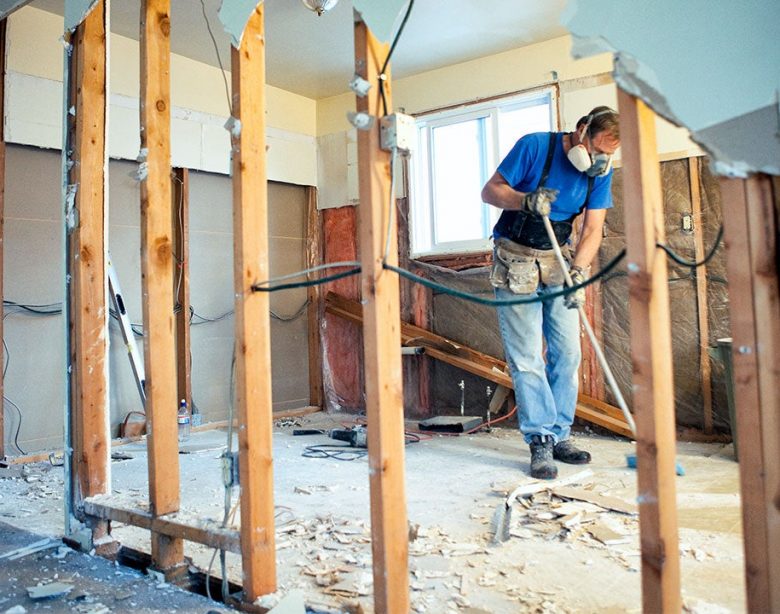Owning a home is one of the ways the people build wealth as time passes. However, another popular but often overlooked way to build wealth in real estate is with a strategy known as house hacking.
House hacking can be a good way to slowly enter the real estate business with a home that folks already own, and also to learn the ins and outs to be a landlord.
Key takeaways
House hacking is a real estate investing strategy which aims to partially or completely offset the owner’s mortgage payment.
Single-family and small multifamily homes used as a primary residence may be good prospects for house hacking.
Financing a primary residence is usually less expensive than buying a rental property, with better terms and interest rates, and down payments only 0%.
What does it mean to house hack?
House hacking is a real estate investing strategy that involves buying a house and then renting part of the property out.
One example of house hacking is buying a single-family home, then renting out an area or remodeling the basement or attic into a small apartment unit. Rental income made is used to pay down the mortgage balance and build equity in the home.
When the time is right, the owner has the option of doing a cash-out refinance to carefully turn the accrued equity in your own home into cash, and to use the amount of money as a down payment to get another rental property.
Buying a small multifamily property – like a two-unit duplex or a three-unit triplex – is another way real estate investors house hack.
Both Fannie Mae and Freddie Mac have mortgage products for 2- to 4-unit primary residences with low interest levels and affordable down payments. House hacking a multifamily property happens when the investor/borrower lives in a single unit and rents the other units out.
Income from the rental units is utilized to make extra principal payments on the mortgage. If the accrued equity in the multifamily property becomes large enough, the investor might be able to refinance and pull cash out of the home to purchase another small multifamily building.
The advantages of house hacking
House hacking can be a good strategy for people who want to slowly get into the real estate investing business. Financing female residence is normally more affordable than getting a loan for an investment property, with better rates of interest and reduce payments.
House hacking can even be a way to get used to being a landlord, because the tenant literally lives down the hall or right next door. Any issues that arise can be immediately addressed, and many beginning investors find that learning-by-doing helps to lay a good foundation for eventually being a full-time real estate investor.
Some of the key advantages of house hacking include:
House hacking allows visitors to minimize how much capital tangled up in a rental property, and is a way for folks without a fortune to get started investing in real estate.
Financing the property as female residence normally does not require a huge down payment and usually offers better loan fees and interest rates.
Reducing personal housing costs by using rent money to pay toward the mortgage really helps to build equity faster.
Using tax deductions, such as the cost of repairs and depreciation expense for the property that is used as a rental, reduces the owner’s taxable net income.
House hacking minimizes unproductive travel time and transportation costs going to the rental property because the dog owner already lives there.
Learning the ropes of being a landlord through house hacking is an excellent first step to becoming a successful real estate investor.
How to successfully hacking contractor a property
House hacking a single-family home or small multifamily property follows the same general steps:
1. Understand financing options
Conventional loans, along with FHA and VA loans, are three common ways to finance an initial residence through a traditional lender like a bank or credit union.
Interest rates tend to be attractive, even for borrowers with lower fico scores, and down payments may be 5% or less. VA loans backed by the Department of Veterans Affairs even allow veteran borrowers to acquire 100% financing over a home.
According to the Consumer Financial Protection Bureau (CFPB), before shopping for a home loan a borrowers should:
Check their credit report
Assess how their spending habits changes with a home loan
Budget for additional or changed expenses
Determine how much of a down payment is necessary
Decide on a purchase price of a home
Create a loan application package with personal and financial information including pay stubs, W-2 forms, copies of recent taxation statements, bank statements, and proof of identity
2. Search for a good property to accommodate hack
A property that is a viable prospect for house hacking may have characteristics that are slightly unique of a home that the master will live in year after year.
That’s because eventually, most house hackers will turn the primary residence into a rental property as they grow their rental property portfolio. So that it is wise to choose a home that will make a good rental right from the start.
Common factors that real estate investors consider when choosing a good rental property include:
The neighborhood, which will influence the sort of tenants the house will attract and the rent they are able to pay.
Property tax rates, which vary widely in one place to the next and can have a significant impact on the entire return of a rental home.
School district quality, crime rate, and overall neighborhood ratings affect occupancy levels and the overall value of the home.
Job market and population growth are two indicators real estate investors consider to help predict the near future demand from tenants for rental housing.
Housing Price Index (HPI) and Housing Affordability Index (HAI) are two other metrics investors use to anticipate rental property demand, since when home prices are unaffordable more people might want to rent rather than own.
3. Crunch the numbers before making an offer
Before making an offer on a home to house hack, investors crunch the numbers to get an improved idea of the actual amount of income the home may generate.
Even though a home being house hacked won’t be utilized completely as a rental at first, investors often anticipate the day when the property can be refinanced and the equity turned into cash to use as a deposit to purchase another rental property.
4. Close escrow, move around in, and make repairs
Closing costs over a primary residence normally run between 3% and 5% of the loan amount, in addition to the down payment. Fees to close escrow on a home include costs such as origination charges, appraisal fee, home inspection, tiling service search and lender insurance, prepaids (such as homeowner’s insurance and prepaid interest), and title insurance.
After taking title and relocating, the part of the property being rented out will need to be made ready for a tenant.
The amount of repairs and updating required will change depending on whether a bedroom in the home has been rented, a basement or attic is being remodeled into a studio apartment, or extra units in a multifamily property are being updated.
5. Find a good tenant
People who are house hacking and being landlords for the very first time should take care to understand the state landlord-tenant laws and the Fair Housing Act to avoid breaking regulations or discriminating against a tenant.
Here are five reasons why they might remain builders’ and homebuyers’ favourite in equal proportions:
Affordable: Tiles are as affordable as it gets. The starting price of an tile starts from Rs 25 per square foot in Indian markets and can go upwards in several hundreds, depending on its quality, variety and type. You might regulate your budget according to your pocket. Tiles also act as the more affordable substitute of expensive materials. If you value marble, but don’t want to make use of it as your flooring option for its disadvantages, tiles should come to your rescue. Simply find the ones that be like marble floors. The same will additionally apply to wooden-floor look-alike tiles too.
Variety: There is hardly other things that offer a builder much in conditions of variety. You will find them in all sorts of colors, designs, textures and types. Based on your specific needs, you might pick the most suitable ones. Tiles created for bathroom, for instance, are quite different from the tiles meant for flooring. You enter the marketplace and you simply find a huge variety.
Application: The process to install other building materials is quite long and cumbersome – the same is incorrect of tiles. It might take approximately two weeks to install marble flooring in a house measuring 500 sqft. In the event that you went for tile flooring, the project would be done in a matter of 4-5 days or even less. Also, the wastage would be significantly less when compared to other materials.
Cleaning: One has to utterly careful about how they clean a concrete wall or a wooden floor. An excessive amount of contact with water and the material will spoil. As soon as they get spots or dirt patches, cleaning them would be a significant task, too. Not tiles! They can be one of the much easier to clean.
Water resistant: This is possibly the best feature tiles have. They can be almost impervious to the effects of water, hence widely used in bathrooms, kitchens and even floors. No other building material in the same price range and in the same aesthetic category can boast the same. Even marble is porous!
When the space is prepared to be rented, they are the general steps investors follow to screen tenants:
Determine minimum tenant criteria, such credit score or income-to-rent ratio
Pre-screen tenants by discussing requirements such as the monthly rent, security deposit, rental application fee, and background check-up front
Gather and review applications from possible tenants and get permission to perform a credit file, conduct a background check, and contact current and previous employers and landlords to verify tenant information
Decide on the best tenant and sign a lease agreement




